EdTech Product Design: Using Generative UI to Build Parent Trust
How dynamic narratives and empathetic design can transform the parent experience in educational technology.
▪ July 7, 2025▪ January 9, 2024
There is no shortage of ways to improve our personal wellness – from eating better foods, getting more sleep, exercising more often, and brushing our teeth more efficiently.
However, adopting better habits and keeping them is challenging. Without proper support, we have fits and starts and slip back into comfortable patterns. Wellness technologies are explicitly designed to help change everyday behaviors and develop new routines. They borrow strategies from behavioral science to nudge us to do better.
From Apple Watches to Peloton bikes, we explore some of the best mechanisms used in product design to drive behavior change.
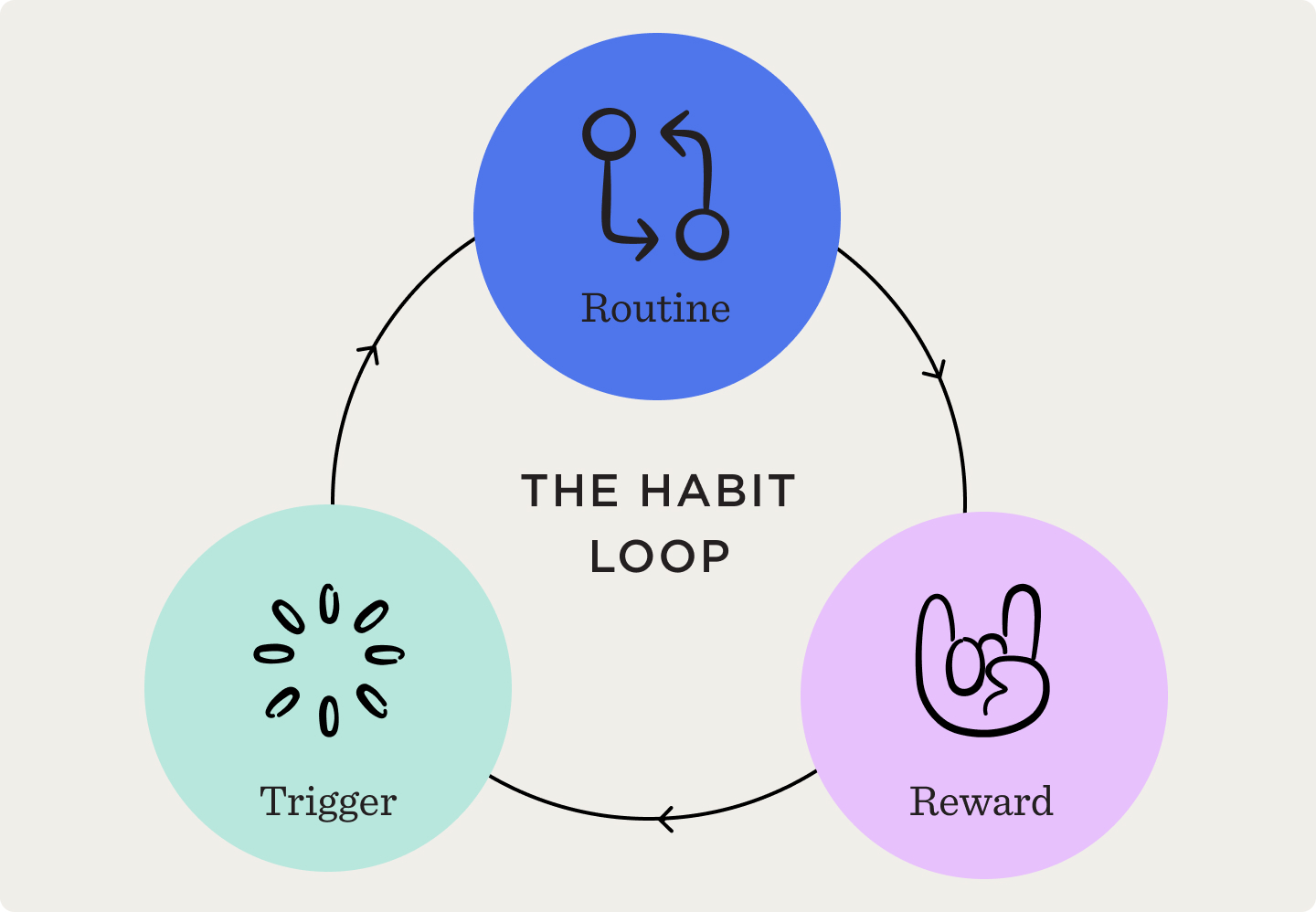
Before we talk about behavior change, we need to understand the habit loop. The habit loop, made famous by Charles Duhigg’s book The Power of Habit, is the basic structure of habits and what most wellness technologies use as a framework for behavior change. It boils down to 3 steps: trigger, routine, and reward.
If you consider something as simple as brushing your teeth, the trigger could be the last step in your nighttime routine. The routine is brushing your teeth, and the reward is the minty taste that lasts long after you’ve put down your toothbrush.
With the habit loop framework in mind, let’s consider how wellness technologies use it in their user experience.

The trigger is what creates the craving to do the routine. It’s challenging to manufacture a trigger without knowing a user’s current routine.
Fitness apps like Sweat and Peloton encourage you to schedule your workouts ahead of time using what’s called pre-commitments. This technique helps you make a plan for your routine, which, in turn, makes it easier for you to follow through—the more specific the commitment, the better. Calendars are better than to-do lists because calendars show the limited time in the day, while a to-do list can only continue to grow. Once scheduled, the time of day becomes the trigger.
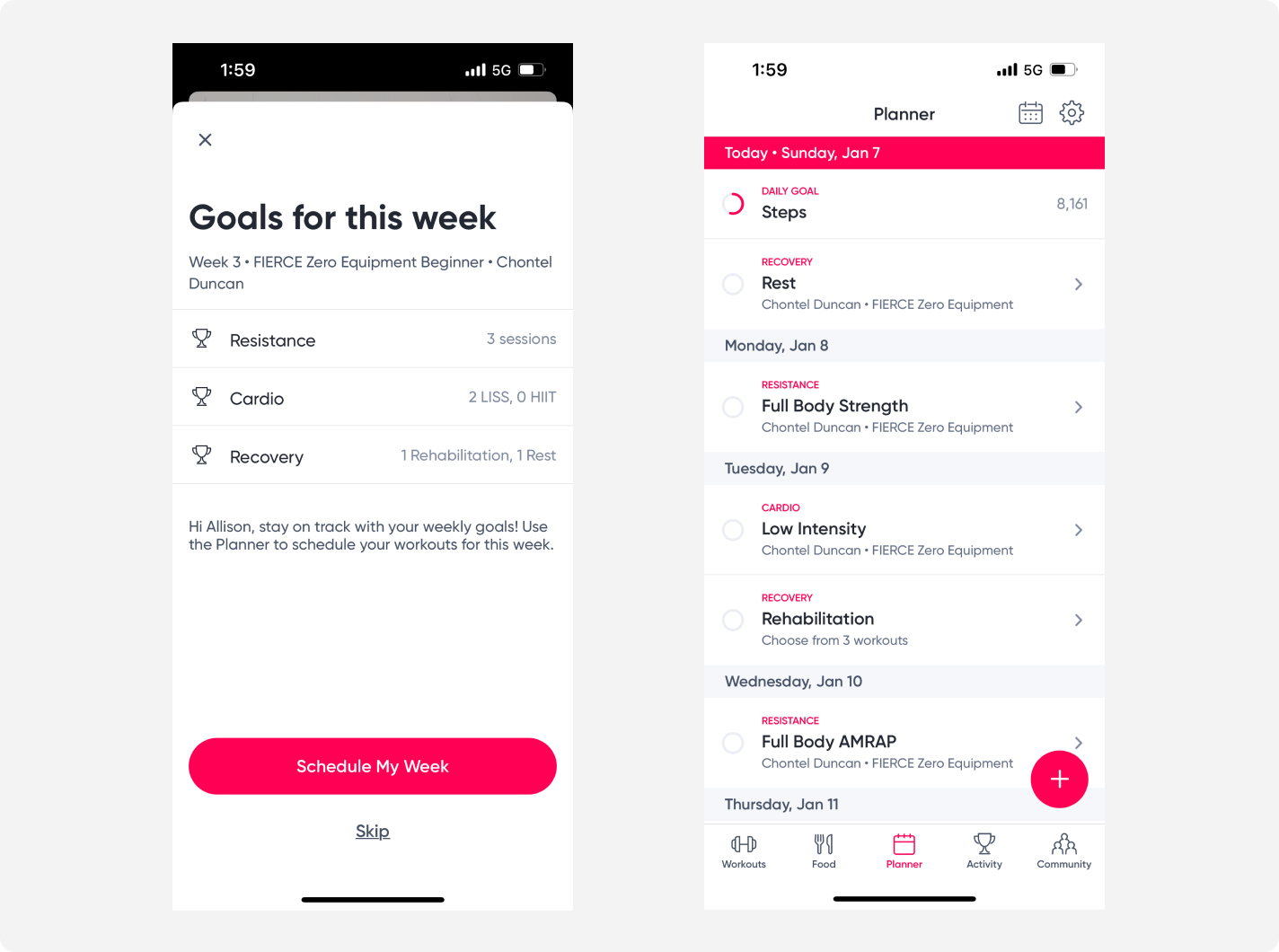
Push notifications can act as reminders to trigger the routine. While push notifications can be effective, they can also become annoying noise.
When creating a trigger, wellness technologies should consider ways to integrate habits within an existing routine. James Clear’s book Atomic Habits recommends habit stacking. This concept helps you create a trigger by stacking the new behavior on top of something you already do daily. For example, if you want to work out more, you could stack the behavior of working out right after drinking your morning coffee.

The routine is the behavior you want to adopt or encourage, and the reward encourages you to do it. It’s more complicated than setting up a routine and repeating it for success. Routines are often challenging because the reward isn’t big enough to keep us motivated. Case in point: most New Year’s resolutions fail by February.
Routines are often tied to a larger goal – whether stated explicitly or not. For example, working out might be connected to feeling healthy and confident in a bathing suit. The problem is that achieving the larger goal requires a long path (sorry, 6-pack abs). When the results aren’t immediate, it’s easy to get discouraged and quit prematurely.
This is where the goal gradient effect and milestones come in. Behaviorist Clark Hull coined the goal gradient effect, observing that animals (and people) exert more effort the closer they get to a reward. The closer we get to the finish line, the more likely we are to increase effort and finish.
Milestones help when the path to achieving our goals is long with no finish line in sight. They break the long path into more manageable, achievable wins – mini-goals that make it easy to feel progress as we go. Used together with the goal gradient effect, the closer we get to achieving a milestone and getting the reward, the more likely we are to complete the routine.

Take Orange Theory Fitness, for example. Their technology gamifies heart rate zones to help exercisers achieve results. Exercisers wear a heart rate monitor during workouts that syncs with equipment and phones. Their heart rate is displayed and color-coded into zones as they work out. This color-coded system encourages exercisers to stay in zones 4 and 5 (the optimal “orange zone”) for 12+ minutes. Exercisers can achieve mini-goals each workout by visualizing milestones for their heart rate zones.
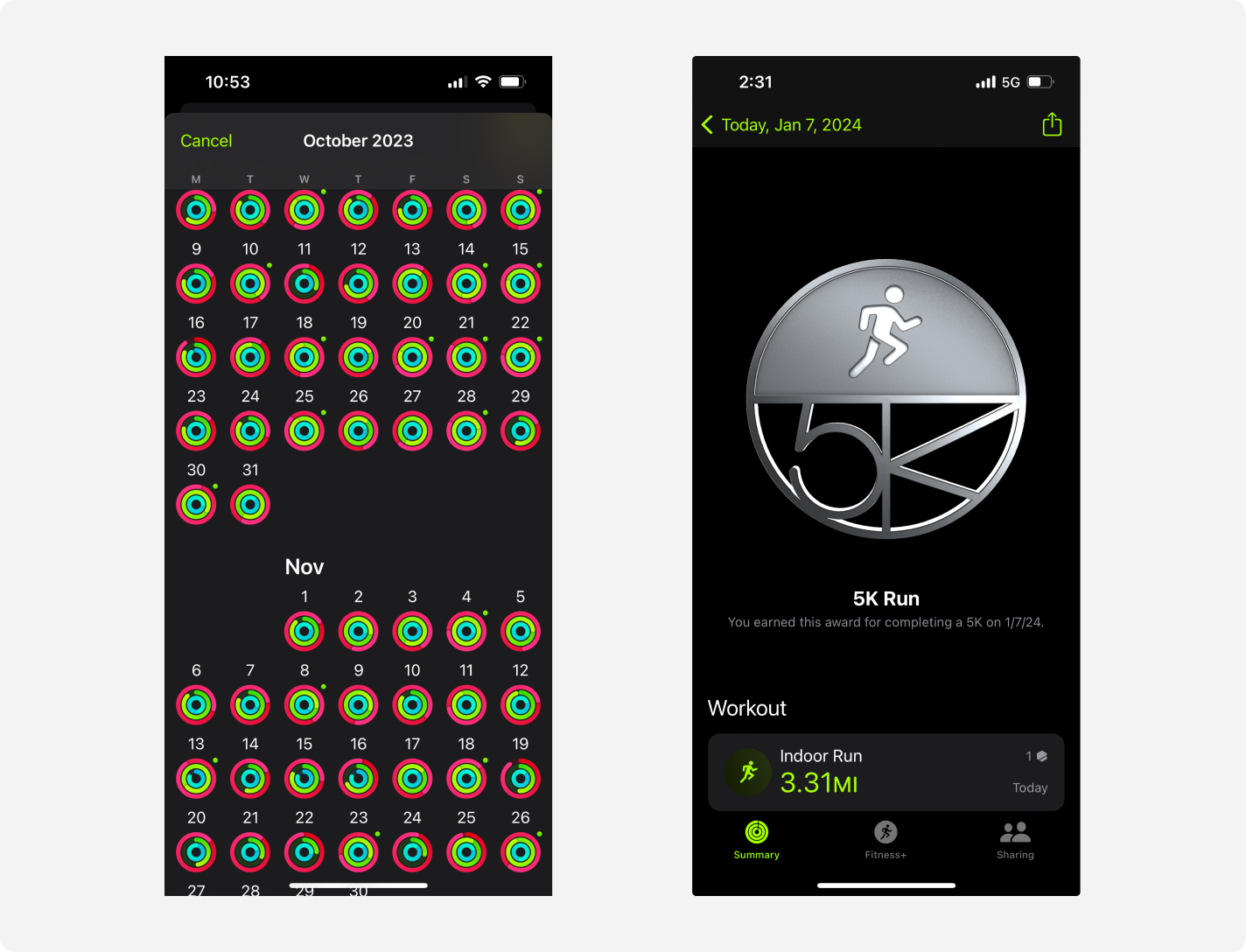
The Apple Watch fitness app uses mini-goals and awards to motivate users to meet daily and long-term goals. It tracks calories burned, exercise minutes, and standing hours throughout the day. Progress is shown with celebratory concentric circles when goals are achieved. Awards are given for long-term goals like a perfect week or monthly challenges.

The reward, given immediately after the routine, makes it worthwhile and has us looking forward to doing it. While seeing improvement aligned with the bigger goal (fitting into those jeans again) is the sweetest reward, wellness technologies can create rewards to reinforce behaviors and routines, maintaining momentum. Typical mechanics include celebrations, encouraging words, and recognizing streaks.
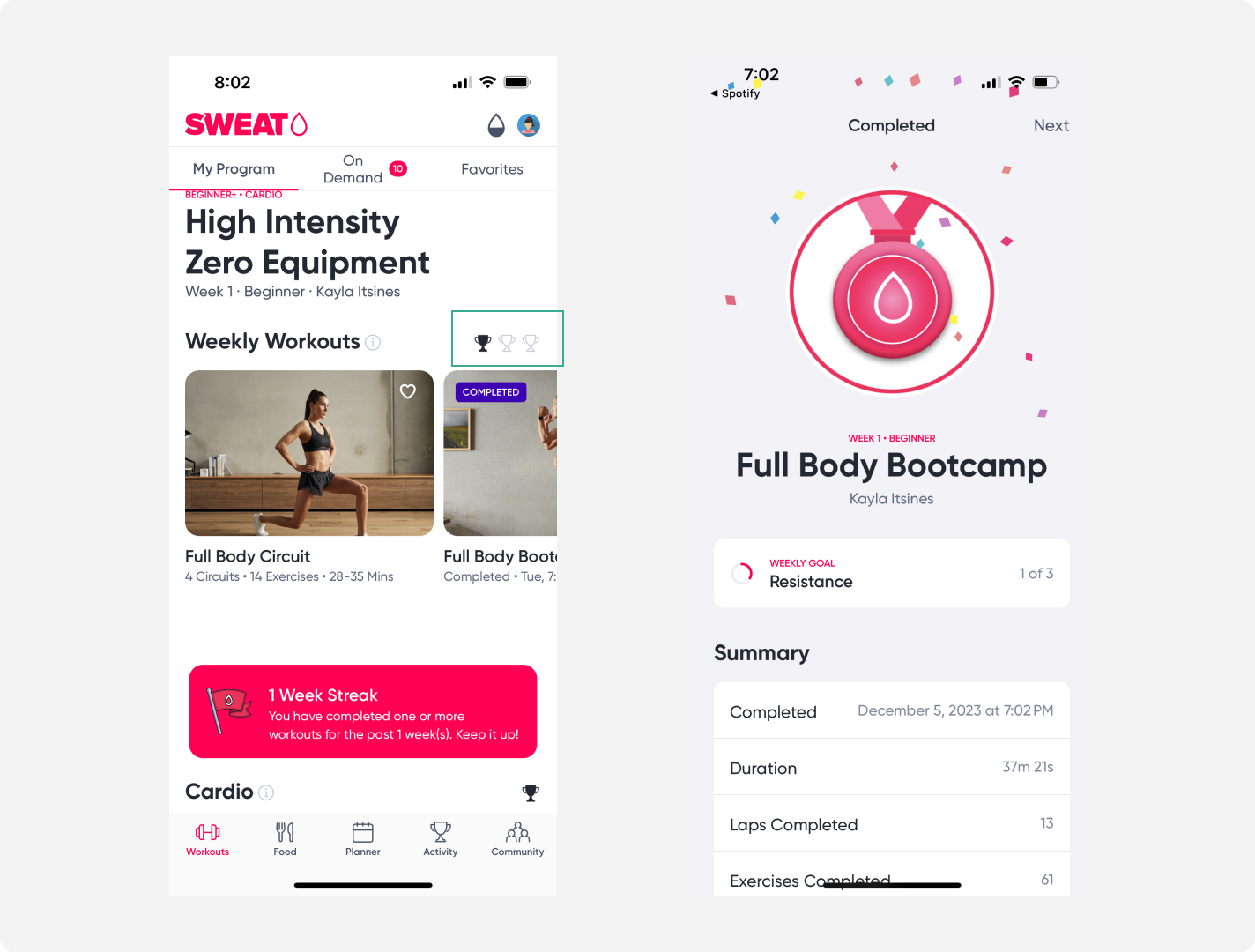
The fitness app, Sweat encourages users to commit to three workouts per week. At the end of each workout, the screen transforms into confetti, celebrating completion as they progress toward their goal. The app uses this celebratory moment as a reward that encourages the user to continue.
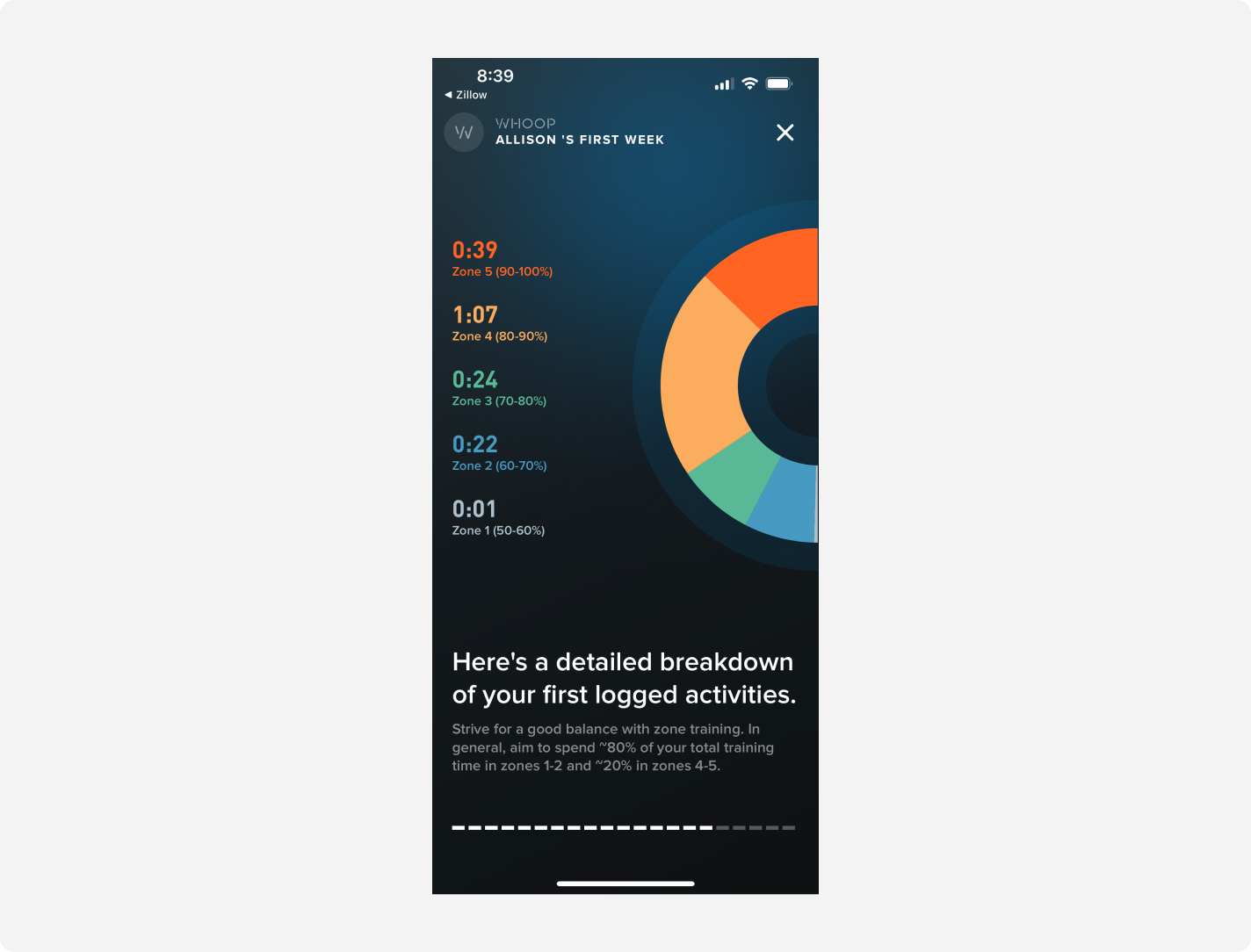
The Whoop band monitors biometrics to provide detailed feedback on sleep, exercise, recovery, and more. After the first week of wearing the band, Whoop rewards consistency with a detailed breakdown of the user’s activity. This encourages continued use and guides the user to build habits aligned with their goals.
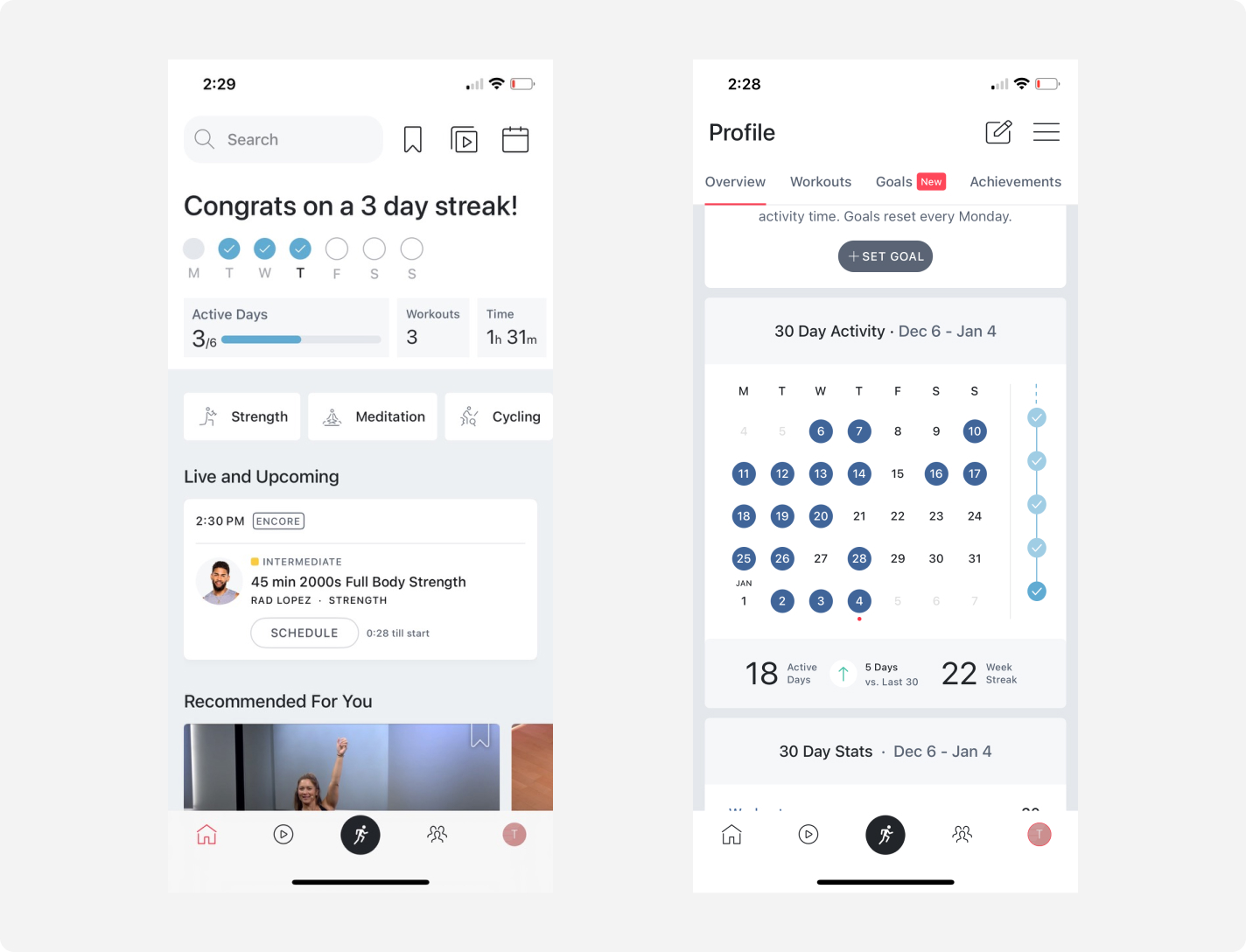
Peloton uses streaks to encourage consistency. Their app uses a calendar – each time a user completes a workout, the date turns blue. Users track daily and weekly streaks. The addictive blue dot has led people to squeeze in workouts during lunch or meditation during showers to maintain their streak.
Wellness technologies leverage behavioral science insights to help build better habits. By understanding the habit loop – trigger, routine, and reward – they can design experiences that set us up for success.
Pre-commitments and reminders act as triggers. Milestones and progress tracking keep us motivated through routines. Celebrations, encouraging messages, and streak recognition reward our efforts. With the right mix, wellness technologies can turn intentions into lifelong positive habits.
How dynamic narratives and empathetic design can transform the parent experience in educational technology.
▪ July 7, 2025Integrating continuous customer feedback into your product design process takes work yet pays compounding rewards over time as your product offering evolves intuitively to deliver more and more value. Learn about 4 lightweight methods you can implement today.
▪ January 30, 2024If your goal is a user-centered product, analysis of your user research is an important step in defining the details that will align your product with users’ needs. Learn a process for data analysis that will make decision-making and design more effective.
▪ December 7, 2023